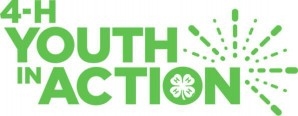Youth Advocacy Matters — Finding a Voice Through 4-H
ID
4H-907NP
Introduction
Youth advocacy refers to youths’ positive development through experiences and processes that can influence their social and political attitudes and behaviors. Youth advocates typically work alongside adults and peers fighting for issues, such as health, civil rights and justice reform (Woolworth, 2014). Advocacy experiences can take place in a variety of places, such as public organizations, non-profits and the private sector – all with the goal of working for change and solutions. Through advocacy roles, youth are able to develop important life skills, develop social skills and strengthen educational experiences (Tommey et al., 2018).
4-H youth are able to gain numerous skills through advocacy experiences, such as:
Participating in community problem solving and discussion
Understanding the impact of social, economic and environmental issues on communities
- Learning how important decisions are made on issues that impact the community or an organization
Background
Young people have always been a voice of change and have pushed to create change where needed. Many have a desire to make a difference and be a voice of change. The intent behind youth advocacy is often to change the world or be the difference in someone’s life. This change can be associated with a young person’s desire to be an active and engaged citizen in the community. Sometimes their actions are attached to their desire to find a deeper meaning in life. Other times, youth advocacy is simply a response to injustice young people either face or witness but cannot stand by idly and ignore.

Key Terms
Civic Engagement – an approach that encompasses individuals getting involved and addressing public issues in their community (Delano-Oriaran, 2015). https://4-h.org/wp- content/uploads/2016/02/authentic-youth-engagement-gid-jul101.pdf
Lobbying – activities dedicated to letting politicians know of interests and thoughts from special interest groups (Black, Hashimzade, & Myles, 2017). https://freechild.org/youth-as-lobbyists/
Nonpartisan – a neutral individual who does not choose between any political groups http://coalition4evidence.org/
Social Justice – the idea that individuals deserve an equal chance to be involved in their community opposed to what others may think (Delano-Oriaran, 2015).
https://docs.wixstatic.com/ugd/dd590a_72a1bbcd26ae4b44ba8a5877bb40370b.pdf
Resources to Implement Youth Advocacy Programs
Youth leadership advocacy clubs focused on increasing awareness of teen programs that meet needs of the community and interest of group (i.e., www.pyninc.org, http://www.yapinc.org/resources)
Organizing focus groups and rallies for youth to have more voice in their community on important issues https://www.youthuprising.org/programs/civic-engagement
Youth campaigns that can educate their community about social justice issues through creating flyers, posters, digital videos and 4-H visual arts programs (i.e., www.4-h.org/get- involved/grow-true-leaders/)
Lobbying with public/local charities on nonpartisan issues (i.e., YMCA)
Partnerships with rural and urban civic groups to push more citizens to vote through non-profit voting participation (i.e., www.pano.org) https://www.vachamber.com/, http://www.blackgreek.com/
References
Black, J., Hashimzade, N., Myles, G. (2017). A Dictionary of Economics. Oxford University Press. Retrieved 7 Apr. 2017, from http://www.oxfordreference.com/view/10.1093/a cref/9780198759430.001.0001/acref-9780198759430
Delano-Oriaran, O. (2015). The SAGE sourcebook of service-learning and civic engagement. Thousand Oaks, California: SAGE Reference.
Toomey, M., Smathers, C., Iaccopucci, A., Johnston, K., & Johannes, E. (2018). Youth Workers’ Role in Engaging Youth in Health Advocacy for Community-Level Change. Journal of Youth Development, 13(3), 12-23. doi: https://doi.org/10.5195/jyd.2018.668
Woolworth, S. (2014). Youth Advocacy. In The Encyclopedia of Theoretical Criminology, J.M. Miller (Ed.). Doi:10.1002/9781118517390.wbetc189
Virginia Cooperative Extension materials are available for public use, reprint, or citation without further permission, provided the use includes credit to the author and to Virginia Cooperative Extension, Virginia Tech, and Virginia State University.
Virginia Cooperative Extension is a partnership of Virginia Tech, Virginia State University, the U.S. Department of Agriculture (USDA), and local governments, and is an equal opportunity employer. For the full non-discrimination statement, please visit ext.vt.edu/accessibility.
Publication Date
May 6, 2025



